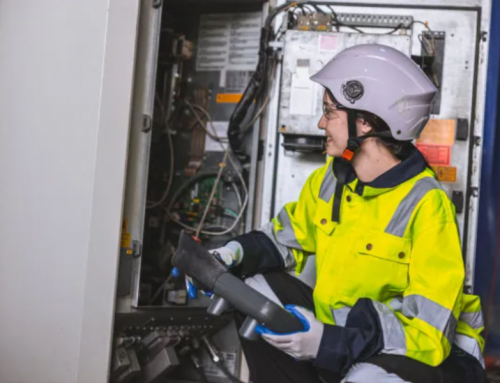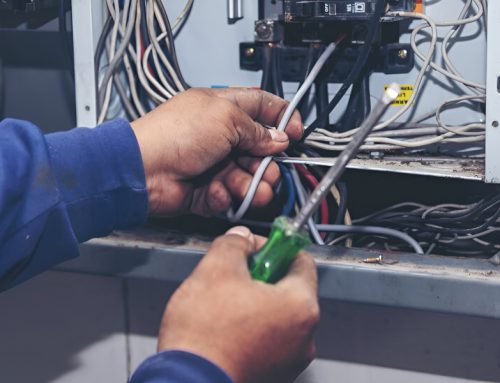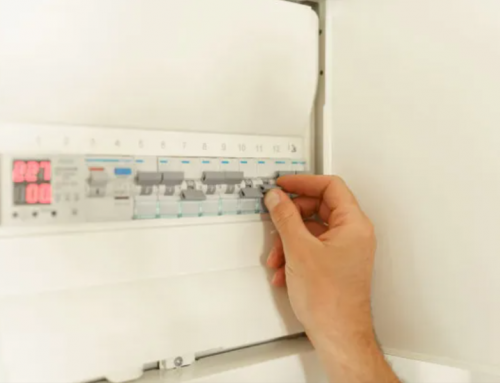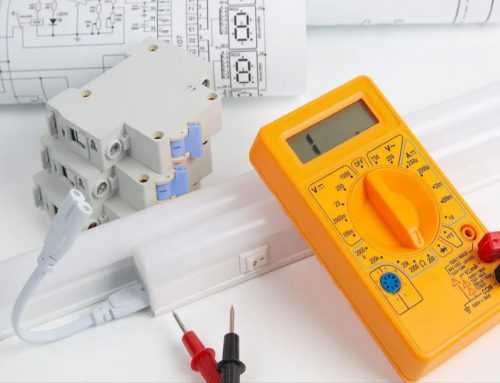How to replace circuit breakers?
1.Introduction.
This article aims to introduce the definition of circuit breakers and provide a detailed explanation of how to replace them. At the same time, we will explore common situations where circuit breakers need to be replaced and provide precautions before replacing them. In order to better illustrate how to replace circuit breakers, we will also conduct in-depth analysis based on actual cases.
2.Circuit breaker.
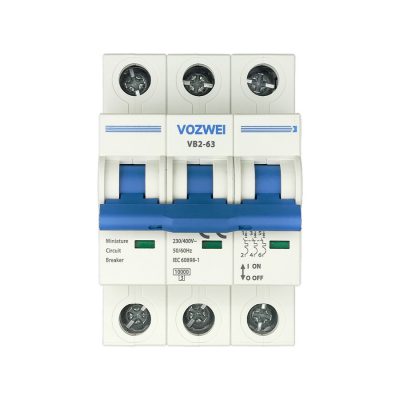
A circuit breaker is a device used to protect electrical systems from faults such as overload and short circuits. It plays an automatic switch role in the circuit, which can quickly cut off or restore current flow to protect the safety of equipment and personnel. As an important component of electrical engineering, circuit breakers have many characteristics and functions.
Firstly, the circuit breaker has the function of overload protection. When the current in the circuit exceeds the preset value, the circuit breaker will automatically trip and cut off the circuit to prevent damage to the circuit and equipment due to overload. This overload protection is very important for maintaining the normal operation of electrical equipment, as it can avoid safety issues such as fire caused by electrical system overload.
Secondly, the circuit breaker also has the function of short circuit protection. Short circuit refers to the situation where abnormal or direct contact occurs in a circuit, resulting in a rapid increase in current. Circuit breakers can quickly detect short circuit faults and quickly cut off the circuit to prevent equipment damage, fire, and other hazards caused by short circuit currents.
In addition, circuit breakers also have the characteristics of high reliability and sensitivity. It can quickly cut off the current immediately after a circuit fault occurs, avoiding further expansion of the fault. At the same time, circuit breakers have high sensitivity and can detect and cut off small and transient currents, protecting the normal operation of electrical equipment.
The operation of the circuit breaker is also very convenient, with two modes: manual and automatic. Manual operation refers to cutting off the current by pressing the manual button, usually used in maintenance and repair work. And automatic operation is achieved through built-in electronic components, which can automatically switch according to preset conditions, improving the safety and stability of the electrical system.
In addition, circuit breakers can also be classified based on their rated current and breaking capacity. The rated current refers to the maximum current that a circuit breaker can withstand, while the breaking capacity represents the transient current that the circuit breaker can withstand when cutting off the circuit. The selection of these parameters needs to be reasonably designed based on the actual needs and load conditions of the electrical system to ensure the safe operation of the circuit.
In summary, circuit breakers, as important safety devices in electrical systems, have characteristics such as overload protection, short circuit protection, high reliability, high sensitivity, and convenient operation. It plays a crucial role in electrical engineering, protecting the safety of electrical equipment and personnel, and maintaining the stable operation of circuits.
3. When does the circuit breaker need to be replaced?
As an important safety device in the electrical system, circuit breakers may encounter various faults during use, resulting in their inability to function properly. If not replaced and maintained in a timely manner, it will have a serious impact on the safe operation of the electrical system. Below are some common reasons why circuit breakers need to be replaced.
Firstly, the circuit breaker is aged or damaged. During the working process, circuit breakers may be damaged or aged due to factors such as repeated insertion and removal of current and transient current. If the metal components of the circuit breaker experience melting, deformation, or severe corrosion, it is necessary to replace the circuit breaker to ensure the safety and stability of the circuit.
Secondly, the circuit breaker capacity is insufficient. With the updating and upgrading of electrical equipment, the load current also increases correspondingly, which may exceed the carrying capacity of the original circuit breaker. At this point, it is necessary to replace the circuit breaker with a larger capacity to meet the actual needs of the electrical system.
Thirdly, it has not been used for a long time or has a small load for a long time. Long term unused circuit breakers, such as those in vacant rooms of newly built buildings, may have rust or corrosion on their internal metal components. When the switch is restarted, poor contact may cause the circuit breaker to malfunction. Circuit breakers with small loads for a long time may also experience internal oxidation, corrosion, and other issues, affecting their normal use.
Fourthly, the circuit breaker frequently trips. If the circuit breaker frequently experiences overload or short circuit protection, it indicates a problem with the electrical system, possibly due to excessive line load or faulty equipment. At this point, it is necessary to troubleshoot the electrical system and replace it with a suitable circuit breaker.
In addition to the above situations, there are also some other factors that can affect the service life and reliability of circuit breakers. For example, factors such as high or low ambient temperature, humidity, and harmful gases can all lead to circuit breaker failure or damage. Therefore, in daily use, it is necessary to regularly inspect and maintain the circuit breaker to ensure its normal operation.
In summary, circuit breakers, as an important component of the electrical system, require regular inspection and maintenance to ensure their normal operation. If aging, damage, insufficient capacity, frequent tripping and other situations occur, it is necessary to replace the appropriate circuit breaker in a timely manner to ensure the safe operation of the electrical system.
4.Precautions before replacing circuit breakers!

Replacing a circuit breaker is an important work related to electrical safety. In order to ensure the smooth progress of the work and ensure the safety of personnel and equipment, there are some precautions that need to be paid special attention to. The following is a detailed introduction before replacing the circuit breaker.
(1). Power off operation: Before replacing the circuit breaker, be sure to cut off the power supply of the relevant circuit. Firstly, cut off the main circuit breaker or main distribution circuit breaker corresponding to the circuit to be replaced, ensuring that the circuit is in a power off state. In addition, it is necessary to confirm through instruments or testing instruments that the circuit is indeed dead, in order to avoid accidental operation that may cause electric shock or equipment damage.
(2). Determine the specifications of the circuit breaker: Before replacing the circuit breaker, it is necessary to clarify the specifications and parameters of the new circuit breaker, such as rated current, breaking capacity, etc. These parameters need to be reasonably selected based on the load situation and safety requirements of the original circuit, to avoid waste caused by the inability of the new circuit breaker to meet circuit requirements or excessive capacity.
(3). Keep records and markings: Before disassembling the original circuit breaker, it is recommended to clearly record and mark the circuit. You can use a camera to take photos, draw circuit diagrams, or provide written instructions, recording the position, connection method, cable color, and other information of the original circuit breaker for reference in subsequent disassembly and troubleshooting work.
(4). Ensure safety tools and equipment: Replacing circuit breakers requires the use of some tools and equipment, such as insulated gloves, insulated tools, etc. When operating, it is necessary to wear personal protective equipment such as insulated gloves and goggles to ensure the safety of oneself and surrounding personnel. In addition, ensure that the tools used comply with standard requirements and prevent the use of damaged or defective tools.
(5). Check the status of the circuit: Before replacing the circuit breaker, carefully check the status of the circuit. Check the circuit for aging, damage, corrosion, and other issues. If there are any problems, they should be repaired or replaced in a timely manner. At the same time, check the connection parts of the circuit, such as solder joints and connectors, to ensure that the connection is firm and reliable, in order to avoid faults caused by poor contact.
(6). Pay attention to touch voltage: When disassembling the original circuit breaker and installing a new circuit breaker, it is necessary to pay attention to the issue of touch voltage. Even if the power supply has been cut off, the capacitor may still store charge. Therefore, during the processing of the circuit, it is best to avoid directly touching metal components and use insulated tools for operation.
(7). Strictly follow the standard operation: When replacing circuit breakers, relevant standards and specifications should be followed for operation. According to the installation manual and electrical engineering design documents of the circuit breaker, correctly connect the wires and adjust the lead length to ensure correct, firm and reliable connection. In addition, it is important to follow the correct sequence and steps for disassembly and assembly to avoid misoperation or connection errors.
(8). Improving acceptance testing: It is very important to conduct necessary acceptance testing after replacing the circuit breaker. The performance and connection of the new circuit breaker can be verified by conducting insulation tests, grounding tests, overload tests, etc. on the circuit using testing instruments. Only after confirming that everything is normal can the power supply be reconnected to ensure that the system operates normally after the power supply is restored.
The above precautions can ensure the smooth operation of replacing the circuit breaker and ensure electrical safety. If encountering uncertain situations or requiring professional knowledge, it is recommended to consult electrical engineers or relevant professionals for guidance.
5.Specific steps for replacing circuit breakers.
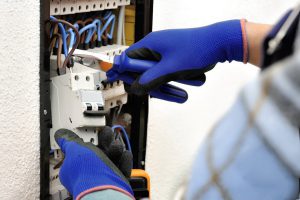
The replacement of circuit breakers is an important task involving electrical equipment and safety. The following are the detailed steps for replacing circuit breakers:
(1). Safety preparation:
Ensure that the power supply is cut off in the work area and use a voltage tester to confirm that there is no current flowing through the circuit.
Wear appropriate personal protective equipment, such as insulated gloves, goggles, and protective clothing.
(2). Find the position of the circuit breaker:
Determine the specific location of the circuit breaker based on electrical system drawings or relevant documents.
Check if there are any other devices or circuits around the circuit breaker to ensure safe replacement.
(3). Disconnect the power supply:
Cut off the power switch on the circuit breaker or pull down the circuit breaker handle to completely disconnect the power supply.
(4). Remove the old circuit breaker:
Use a screwdriver or wrench to remove the bolts or hooks that secure the circuit breaker.
Release the power cable connecting the circuit breaker and separate it from the circuit breaker. It is necessary to pay attention to the wiring of the power cord for proper connection during subsequent replacements.
(5). Install a new circuit breaker:
Place the new circuit breaker in the correct position and ensure that it is securely connected to the bracket or base.
Connect the power cord to the new circuit breaker according to the marking and design requirements of the power cord. Use the correct tools and methods to ensure secure and reliable connections.
(6). Fixed circuit breaker:
Use bolts or hooks to firmly secure the new circuit breaker to the bracket or base.
Ensure that the position of the circuit breaker is stable and will not loosen due to vibration or other factors.
(7). Check the connection:
Check if the connection between the circuit breaker and the power cord is correct and there is no looseness or poor contact.
Use testing instruments to check the continuity and insulation performance of the power cord, ensuring correct installation and no unexpected faults.
(8). Conduct trial operation:
Turn on the power and switch the circuit breaker to its working state.
Check the normal working status of the circuit breaker to ensure that it can respond correctly to overloads and short circuits, and protect the safe operation of the electrical system.
(9). Record completion:
Record the model, installation date, and other relevant information of the new circuit breaker. Update the replacement information of circuit breakers on electrical system drawings or related documents for subsequent maintenance and management.
When replacing circuit breakers, it is necessary to strictly follow safety operating procedures and ensure that you have relevant electrical technical knowledge and experience. If there is no professional knowledge and skills, professional electricians should be hired for replacement work to ensure the quality and safety of the work.
6.Case Study.
The following is a practical case to illustrate the process of circuit breaker replacement.
A manufacturing company found in its factory that a piece of equipment on a production line frequently tripped, resulting in increased downtime and reduced production efficiency. After inspection, it was found that the circuit breaker used in the equipment had insufficient capacity and had already experienced severe erosion and melting, requiring replacement.
In order to replace the circuit breaker, the company first conducted an investigation and evaluation. They determined the type and rated current of the new circuit breaker, and conducted on-site measurements and calculations to ensure that the capacity of the new circuit breaker can meet the load requirements of the production line. Next, they developed a replacement plan and contacted the supplier to purchase new circuit breakers and related accessories.
Prior to the replacement work, the company conducted safety training and preparation work. They turned off the power supply of the relevant equipment to ensure that the electrical system was in a safe state. Subsequently, the dust and debris around the original circuit breaker were removed and the old circuit breaker was dismantled.
During the replacement process, the company strictly followed relevant regulations and operating procedures. They conducted a visual inspection and trial operation of the equipment before installing the new circuit breaker. After confirming that the equipment was normal, they installed a new circuit breaker and conducted electrical connections and debugging. After debugging, they manually started the device and conducted multiple tests to confirm the operation and stability of the new circuit breaker.
Finally, the company recorded and summarized the replacement work. They retained the old circuit breaker and related accessories, numbered and identified the new circuit breaker, and input relevant information into the electrical management system. They also conducted a comprehensive inspection and maintenance of the electrical system of the production line to ensure the safety and stability of the circuit.
Through the above cases, we can see that circuit breaker replacement requires thorough investigation and evaluation, and the development of detailed replacement plans and processes to ensure the safety, efficiency, and reliability of the work. At the same time, it is necessary to conduct a comprehensive inspection and maintenance of the electrical system to ensure the normal operation of the production line.
Conclusion
Through the introduction of this article, we can have a clear understanding of how to replace circuit breakers. Firstly, we need to understand the basic knowledge and types of circuit breakers, as well as the situations in which circuit breakers need to be replaced. Secondly, before replacing the circuit breaker, we need to pay attention to some important matters, such as power outage operation, determining the circuit breaker specifications, recording and marking, ensuring safety tools and equipment, and checking the circuit status. Next, we detailed the specific steps for replacing circuit breakers, including safety training, equipment inspection, dismantling of old circuit breakers, installation of new circuit breakers, electrical connection debugging and testing, etc. Finally, we combined practical case analysis to demonstrate the process of replacing circuit breakers. Through reading this article, you can learn how to replace circuit breakers correctly and safely, and effectively improve the stability and safety of electrical systems.
References
Appendix
Circuit: The complete closed path through which a current can pass.
